
This is where you find all our press releases and news articles.
With the change of people's dietary structure and the improvement of living standards, the demand for meat products of pigs, cattle, sheep, chickens, ducks and goose will increase greatly, and the demand for livestock and poultry aquatic feed products will increase accordingly. The design scale of this project is the production and processing project of an annual output of 300,000 tons of cattle, mutton and chicken feed pellets. It operates 300 days a year and operates 16 hours a day. It produces 62.5 tons of livestock and poultry aquatic feed pellets per hour, and the daily output of feed pellets is as high as 1000 tons.

Large-scale Livestock and Poultry Aquatic Feed Pellet Production Line Processing Project
The main project of the project includes production equipment for livestock and poultry feed products (designed to produce 300,000 tons of compound feed per year) and workshops, and auxiliary projects include comprehensive office buildings, feed product testing laboratories, etc. The storage and transportation projects include raw material warehouses, vertical silos, and Finished product warehouses, etc., and public works include water and electricity supply facilities and fire-fighting facilities.

Structured workshop
The total area of the project is 33471m2, the total building area is 12923m2, and the vertical silo covers an area of 4484m2. The building covers an area of 11153m2, the green area rate is 8.6%, and 35 parking spaces (including 10 large truck parking spaces). The traditional and advanced compound feed processing and production technology adopted in the project does not involve material extraction technology, fermentation technology, and feed additive production. The project composition details are shown in Table 1-1:
Table 1-1 List of contents of this project
| Serial number | Engineering category | Main construction content and scale | Remarks | |
| 1 | structural work | The main workshop 1F occupies an area of 620m 2 , the feeding area occupies an area of 375m 2 The production auxiliary room area occupies an area of 600m 2 (1F, small material room, machine repair room and steam pressure regulating distribution room) |
Main workshop adopts steel frame workshop | |
| 2 | Auxiliary engineering | The office building has a construction area of 2650m 2 (3F), including a product testing laboratory covering an area of 120m 2 | Framework | |
| Weighbridge house, door, Taoism | ||||
| 3 | Storage and Transportation Engineering | 6 1500 cubic meters of vertical silos, 5 300 cubic meters of bulk warehouse raw material warehouse (1F) construction area of 3024 square meters finished product warehouse (2F) construction area of 3024 square meters |
The second phase of the project reserves a 1F finished product warehouse with a construction area of 2450 square meters | |
| Transportation of raw materials into and out of the factory area by car | ||||
| 4 | Public works | Water: using Chenglinji region within the municipal water supply network comprehensive bonded water, water is formed inside the annular project network , divided into domestic water systems, fire protection water systems | The municipal water supply network in Chenglingji Comprehensive Bonded Zone has been completed, and this project is directly introduced by Fengtong Road’s main water supply network | |
| Heating: In the quenching and tempering section of the engineering process, medium and low pressure steam is used, and the pressure of the gas source meets the requirements of the production process of the project. The pressure regulation, transmission and distribution are completed in the steam regulator room of the auxiliary production area. The steam source comes from the central heating network of Huaneng Power Plant |
The central heating pipe network in Chenglingji Comprehensive Bonded Zone has been completed. This project is directly transported by Huaneng Power Plant and the central heating pipe network is introduced through pipelines in the bonded area. | |||
| Drainage: The rain and sewage separation system is adopted. The wastewater in the plant can meet the water quality requirements of the sewage treatment plant in the Lingang New Area after being pretreated in the septic tank, and then be discharged into the municipal sewage pipe network of the comprehensive bonded zone and enter the sewage treatment plant in the Lingang New Area for advanced treatment; The rainwater is collected in the factory area and discharged into the rainwater pipe network of the comprehensive bonded area and finally discharged into Songyang Lake on the north side of the bonded area | The municipal rainwater and sewage diversion pipe network in Chenglingji Comprehensive Bonded Zone has been completed. The sewage and drainage of this project is directly connected to the Fengtong Road sewage branch pipe, and the rainwater is directly connected to the Fengtong Road rainwater pipe network. | |||
| Power supply: The municipal power grid is directly connected to the power distribution room set up in the factory area, and the power supply branch network is formed in the factory area, which is divided into lighting systems and production power systems | The municipal power supply network in Chenglingji Comprehensive Bonded Zone has been completed, and the project is directly introduced by the main power supply line of Fengtong Road | |||
| 5 | Environmental Engineering | Exhaust | Organized waste gas: various sections of the production line (raw material cleaning and receiving, crushing, coordination, granulation, finished product packaging) dust-containing waste gas is processed by the gas collection system + dust removal system, and then passed through a 15m high exhaust cylinder to meet the standard. Unorganized waste gas: raw material transfer , Dissipate dust during loading and unloading process and cool off peculiar smell gas after granulation and tempering. The granulation cooling section reserves a cooling waste gas deodorizing water spray system to strengthen the ventilation and production operation management in the workshop |
|
| Waste water | The domestic wastewater from employees in the office area is treated in a septic tank and then discharged into the municipal sewage pipe network in the bonded area of Xingang District, Chenglingji; the workshop floor cleaning wastewater is treated by sedimentation and septic tank and then discharged together with domestic wastewater. Steam condensate from the regional municipal sewage pipe network It belongs to clean wastewater. After precipitation treatment, it can be reused for regional greening and sprinkling and road dust removal and sprinkling. Part of it can be stored in the fire-fighting pool, and the excess can be discharged to the analysis and test wastewater generated by the rainwater collection pipe network laboratory in Chenglingji Free Trade Zone. Indoor use special collection tank for collection, after neutralization, coagulation and sedimentation treatment, external septic tank and domestic sewage for unified treatment |
|||
| noise | Sound insulation room for mechanical equipment noise is constructed, advanced low-noise production equipment is selected, and shock-absorbing foundation is adopted for sound insulation and noise reduction, and the fan is equipped with a muffler | |||
| Solid waste | The domestic garbage of the employees is cleaned and transported by the environmental sanitation department. The waste raw materials and packaging materials are collected and sold. The material recycling company collects the fine metal impurities generated in the handy section and sells them for comprehensive utilization; sand, gravel, soil and dust ash are transported together safely Dangerous solid waste generated in the landfill laboratory is temporarily stored in the laboratory hazardous waste temporary storage cabinet, and is regularly delivered to a qualified unit for safe disposal |
|||
The main raw materials used in the project are grain crops and their by-products (wheat, corn, soybean meal), which are common raw materials. The project is supporting the construction of a raw material warehouse of 3,024 square meters. On the north side of the raw material warehouse, 6 vertical silos with a volume of 1500 cubic meters and 5 bulk warehouses with a volume of 300 cubic meters are used for stacking the raw materials (wheat, corn) used in the project. The evaluation requires raw materials They shall not be piled up randomly in the factory area, and shall not be piled up in the open air. They shall be piled up to the designated place according to relevant storage requirements. This evaluation requires the owner not to use raw materials with peculiar smell, and the purchase of raw materials should meet the requirements of the compound feed process. The raw and auxiliary materials and energy consumption of the project are listed in Table 1-2.
Table 1-2 List of main raw and auxiliary materials and energy consumption
| Serial number | raw material name | unit | Annual consumption | source | Mode of transport |
| 1 | wheat | Ten thousand tons | 14 | Foreign imports | River-sea combined transportation, automobile transshipment |
| 2 | corn | Ten thousand tons | 10 | Foreign imports | River-sea combined transportation, automobile transshipment |
| 3 | Soybean meal | Ten thousand tons | 3 | domestic purchase | car |
| 4 | Compound premix feed | Ten thousand tons | 2.4 | domestic purchase | car |
| 5 | Zeolite powder | Ten thousand tons | 0.5 | domestic purchase | car |
| 6 | Antifungal agent | Ten thousand tons | 0.1 | domestic purchase | car |
| 7 | water | Tons/year | 1131 | Park water supply network | |
| 8 | Electricity | Ten thousand kwh/year | 746.5 | Park grid | |
| steam | Tons/year | 18000 | Central heating network |

Corn and wheat: These are common grains, and the project uses imported raw materials. These raw materials are stable under normal temperature and pressure, and there is no special gas during storage. Corn and wheat are the bulk raw materials used in the project. They are purchased through international trade and purchased from the river-sea combined transport to the Yueyang Chenglingji foreign trade port. They are then transported to the project plant by vehicles and stored in bulk in raw material silos.
Soybean meal: is a by-product of soybean oil extracted from soybeans. Generally, it is in the shape of irregular fragments, the color is light yellow to light brown, and the taste has a roasted soybean aroma. The main components of soybean meal are protein 40%~48%, lysine 2.5%~3.0%, tryptophan 0.6%~0.7%, and methionine 0.5%~0.7%. As a kind of high protein, soybean meal is the main raw material for making livestock and poultry feed. For soybean meal, there are two steel silos with a volume of 435 cubic meters in the raw material warehouse, and the steel silo for bulk storage of raw materials.
Compound pre-mixed feed: a homogeneous mixture made by mixing various feed additives and carriers or diluents according to the formula and actual requirements. For example, the premix of trace elements, vitamins and other ingredients is a kind of feed additive. The additive is in powder form. Vitamins include vitamins A, D2, E, K3, D3, B6, and multiple vitamins, choline , Pig premix additives, 20-25 kg/bag, stored in the raw material warehouse of this project. The project prohibits the use of product additives that restrict the construction of vitamin B1/B2/B12/C additives in the industrial policy.
Zeolite powder: It is made by grinding natural zeolite rock, the color is light green and white. It has various basic conditions as a carrier and diluent for additive premix. Zeolite has a neutral pH between 7 and 7.5, and when it contains water, it is only 3.4 to 3.9%, and it is not easily affected by moisture and contains mineral salt trace components of crystal water. Mixing can absorb the water in it and enhance the fluidity of the feed. At the same time, it can appropriately extend the release time of trace components and is more conducive to animal absorption. Zeolite powder has no special smell and is stored in the raw material warehouse in 50kg/bag.
Antifungal agent: a feed additive that can reduce the number of microorganisms in the feed, control the metabolism and growth of microorganisms, inhibit the production of mycotoxins, prevent the loss of nutrients during the feed storage period, prevent the feed from becoming moldy and prolong the storage time.
The main equipment of the project includes raw material receiving system, crushing system, batching and mixing system, granulating system, finished product packaging system and related auxiliary systems. The main production equipment configuration list is shown in Table 1-3.
Table 1-3 List of main production equipment configuration of this project
| Serial number | Equipment name | model | single | Quantity | Remarks |
| Raw material receiving system | |||||
| Feeding port and grid screen | 2 | ||||
| 2 | Pulse dust collector | TBLMa12 | set | 2 | |
| 3 | scraper machine | TGSS5 | station | 1 | |
| 4 | scraper machine | TGSU25 | station | 1 | |
| 5 | Self-cleaning bucket elevator | TDTG50/23 | station | 1 | Soybean meal transportation |
| 6 | Self-cleaning bucket elevator | TDTG60/30 | station | 1 | Wheat and corn transportation |
| 7 | Self-cleaning bucket elevator | TDTG50/23 | station | 1 | |
| 8 | Material cleaning screen | SQCY80 | A | 1 | |
| 9 | Stainless steel permanent magnet cylinder | TCXT25 | A | 1 | |
| 0 | Permanent magnet cylinder | TCXT30 | A | 1 | |
| 11 | Yongtong | TCXT25 | A | 1 | |
| 12 | Rotary distributor | TFPX.6 | station | 3 | |
| 13 | Self-cleaning bucket elevator | TDTG50/28 | station | 1 | |
| 14 | Powder sieve | SQLZ75×65×140 | A | 1 | |
| 15 | Permanent magnet cylinder | TCXT25 | A | 1 | |
| 16 | Rotary distributor | TFPX.10 | station | 1 | |
| Crushing system | |||||
| 17 | To be crushed | 20m 3 ×6 | A | 6 | |
| 18 | Loading level device (mechanical) | station | 4 | ||
| 19 | Unloading level device (mechanical) | station | 4 | ||
| 20 | Pneumatic gate | TZMQ 40×40 | station | 4 | |
| twenty one | Buffer bucket | A | 2 | ||
| twenty two | Impeller feeder | SWLY6 | A | 2 | |
| twenty three | Hammer Mill | SFSP66×125D | station | 1 | Muyang products |
| twenty four | Motor soft start device | set | 2 | ||
| 5 | Hammer Mill | SFSP66×125D | station | 1 | Muyang products |
| 26 | Settlement chamber (negative pressure) | A | 2 | ||
| 27 | Pulse dust collector | TBLMa72 | set | 1 | |
| 28 | Pulse dust collector | TBLMa72 | set | 1 | |
| 29 | Fan and silencer | 6-45-7.5A | station | 2 | |
| 30 | Closed wind feeding auger | TLSS32 | A | 2 | |
| 31 | Self-cleaning bucket elevator | TDTG50/28 | station | 2 | |
| 32 | Rotating divider | TFPX.10 | station | 2 | |
| Batching and mixing system | |||||
| 33 | Ingredients warehouse | 20m3 | set | twenty four | |
| 34 | Loading level device (mechanical) | station | twenty four | ||
| 35 | Unloading level device (mechanical) | station | twenty four | ||
| 36 | Warehouse machine | TWLL32 | station | 12 | |
| 37 | Warehouse machine | TWLL25 | station | 8 | |
| 38 | Warehouse machine | TWLL20 | station | 4 | |
| 39 | Ingredients | PCS-3000 | station | 1 | |
| 40 | Ingredients | PCS-2000 | station | 1 | |
| 41 | Pneumatic gate | TZMQ60 | A | 2 | |
| 42 | Double-wing start butterfly valve | DN600 | A | 2 | |
| 43 | Ingredients | PCS-1500 | station | 1 | |
| 44 | Ingredients | PCS-1000 | station | 1 | |
| 5 | Pneumatic gate | TZMQ60 | A | 2 | |
| 6 | Fan | 4-72-2.8A | station | 2 | |
| 47 | Pulse dust collector | TBLMa9 | set | 2 | |
| 48 | Small material adding port | A | 2 | ||
| 49 | Pneumatic gate | TZMQ32×32 | station | 2 | |
| 50 | Add check scale | PCS-025 | A | 1 | |
| 51 | Pneumatic solenoid valve | DN300 | A | 2 | |
| 52 | Double shaft high efficiency mixer | SSHJ8 | station | 1 | |
| 53 | Double shaft high efficiency mixer | SSHJ4 | station | 1 | |
| 54 | Buffer | A | 2 | ||
| 55 | Warehouse wall vibrator | A | 2 | ||
| 56 | Scraper | TGSU32 | station | 1 | |
| 57 | scraper machine | TGSU40 | station | 1 | |
| 58 | Self-cleaning hoist | TDTG60/30 | station | 1 | |
| 59 | Self-cleaning hoist | TDTG50/23 | station | 1 | |
| 60 | Permanent magnet cylinder | TCXT30 | A | 2 | |
| 61 | Pneumatic tee | TBDQ30*30/45 | A | 2 | |
| 62 | Rotary distributor | TFPX.6 | station | 2 | |
| 63 | scraper machine | TGSU32 | station | 1 | |
| 64 | Rotary distributor | TFPX.10 | station | 1 | |
| 65 | scraper machine | TGSS32 | station | 1 | |
| 66 | Rotary distributor | TFPX.10 | station | 1 | |
| Granulation system | |||||
| 67 | To be granulated bin | 20m 3 | A | 4 | |
| 68 | Loading level device (mechanical) | station | 4 | ||
| 69 | Unloading level device (mechanical) | station | 4 | ||
| 70 | Pneumatic gate | TZMQ 40×40 | station | 4 | |
| 71 | Buffer bucket | A | 2 | ||
| 72 | High-end granulator (double-layer stainless steel modulator) | SZLH678 | set | 1 | Modulator∅610*3600mm |
| 73 | High-end granulator (double-layer stainless steel modulator) | SZLH508 | set | 1 | Modulator∅460*3600mm |
| 74 | Stainless steel closed wind fan | GFZ16 | A | 2 | Equipped with shock absorber |
| 75 | Counter flow cooler | KLN8 | station | 1 | |
| 76 | Counter flow cooler | SKLN10 | station | 1 | |
| 77 | Fan | 4-72No.8C | station | 2 | With silencer |
| 78 | Dedicated unloader | 140mm | station | 2 | |
| 79 | Wind shut | TGFY9 | A | 2 | |
| 80 | Three-roller frequency conversion feed pellet processing machine | SZLH | station | 1 | |
| 81 | Self-cleaning bucket elevator | TDTG50/23 | station | 2 | |
| 82 | Rotary classification screen | SFJH165*2e | station | 2 | |
| 83 | Rotary distributor | TFPX.10 | station | 2 | |
| 84 | Pneumatic tee | TBDQ30*30/45 | A | 4 | |
| Finished product packaging system | |||||
| 85 | Finished product warehouse | 30m 3 | A | 12 | |
| 86 | Loading level device (mechanical) | station | 12 | ||
| 87 | Unloading level device (mechanical) | station | 12 | ||
| 88 | Pneumatic gate | TZMQ 40×40 | A | 18 | |
| 89 | Microcomputer quantitative packaging scale | SDBY-P-Ⅱ | A | 2 | |
| 90 | Sewing column | A | 2 | ||
| 91 | Sewing bag conveyor | station | 2 | ||
| 92 | Ton charter | station | 1 | ||
| auxiliary system | |||||
| 93 | Pulse dust collector | TBLMa42 | set | 1 | |
| 94 | Wind shut | TGFY9 | A | 1 | |
| 95 | Fan | 4-72-4.5A | station | 2 | |
| 96 | Wind shut | TGFY7 | A | 2 | |
| 97 | Pulse dust collector | TBLMa48 | set | 1 | |
| 98 | Grease adding system | set | 2 | ||
| 99 | Weighing Piping System | set | 2 | ||
| 100 | Air compressor | station | 1 | ||
| 101 | gas tank | 3m 3 | A | 1 | |
| 102 | Freeze dryer | station | 1 | ||
| Control system and others | |||||
| 103 | MCC/CCP system | set | 1 | ||
| 104 | Field control box | set | 1 | ||
| 105 | Air network system for suction, dust removal, cooling, etc. | set | 1 | ||
The maximum design capacity of the equipment introduced in this project is 65t/h. The production working time of the project is reasonably allocated according to the customer’s order requirements. In general, the production time is calculated based on 300 working hours per year (day working time is 8h/shift, two shifts per day). It has the ability to meet the annual production capacity of 300,000 tons of compound feed.
The overall labor quota of the project is 45, including 30 production personnel, 4 management personnel, 8 purchasing and sales personnel, 1 customs declaration and commodity inspection personnel, and 2 financial and auxiliary personnel. The production management is an 8-hour work system, and the production and processing is a two-shift system a day, one shift is 8 hours, and the annual working day is 300 days. The entire main production workshop implements an eight-hour work system. There is a canteen and no dormitories for employees.
The total investment of the project is 120 million RMB. After the project is completed and put into operation, it will produce 300,000 tons of combined livestock and poultry feed products. According to market analysis and production cost analysis, with reference to the current market sales, the annual sales revenue (including tax) of the project after reaching production capacity is 610 million RMB, the total profit in normal operating years is 39.71 million RMB, and the annual main business tax and additional expenses are about 79.3 million RMB.

Large-scale Feed Pellet Mill Production and Processing Project
The traditional and advanced compound feed processing and production technology adopted in this project does not involve the extraction process and fermentation process, and does not produce feed additives.
Brief description of process principle:
(1) Receiving and cleaning of raw materials
Raw material reception is divided into main raw material reception and side raw material reception. The main raw material reception refers to wheat and corn, and the side raw material reception refers to other raw materials except wheat and corn. The raw materials needed for production are directly sent to the warehouse for storage after being weighed and inspected by a truck scale; wheat and corn need to be processed in a vertical silo.
When transported by bulk cars, trains and ships, the materials are unloaded to the unloading pit after being weighed by a dump truck with a loadometer; the reception of packaging materials: manual handling and mechanical reception. During the handling and loading and unloading of raw materials, a small amount of fugitive dust will be generated. Therefore, the evaluation requires the owner to specify a unified raw material handling and loading and unloading location, and install dust suction at the floor discharge port, discharge port, bucket elevator, and scraper. Cover, collect the fugitive dust and enter it into the dust removal air net system for processing; the bagged raw materials in the factory are specially used for forklifts, combined with a small amount of manual handling, and through strengthening production management, limiting the speed of the control area of the unorganized fugitive dust. Workers wear labor protection equipment and dust masks during the process of raw material receiving, transfer, loading and unloading, and concentrated water spraying around the loading and unloading points to prevent the dust from spreading. Through the establishment of green dust barriers around the warehouse, the dust can be controlled within the scope of the workshop and avoid the surrounding air. environmental impact.
Impurities in feed ingredients not only affect the quality of feed products, but also directly affect feed processing equipment and personal safety. In severe cases, the entire equipment may be destroyed and affect the smooth progress of feed production, so it should be removed in time. The cleaning equipment of the feed factory is mainly screening and magnetic separation equipment. The screening equipment removes large and long debris such as stones, mud and sack pieces in the raw materials. The magnetic separation equipment mainly removes iron impurities. In this project, the raw materials that need to be crushed will enter the production workshop through the conveying equipment, and then enter the warehouse to be crushed after the impurities are removed by the primary cleaning screen and the iron impurities are removed by the magnetic separator. The raw materials that do not need to be crushed enter the production workshop through the conveying equipment, and are sent to different batching bins by the distributor after the impurities are removed by the primary cleaning screen and the iron impurities are removed by the magnetic separator.
(2) Crushing of raw materials
The raw materials in the bin to be crushed are crushed to the qualified particle size requirements by a crusher, and then distributed to the batching bin for storage by the conveying equipment. The feed crushing process used in this project is a cyclic secondary crushing process. In the single-cycle pulverization process, a pulverizer is used to pulverize the material and then be sieved, and the screened material is returned to the original pulverizer for pulverization.
(3) Ingredient mixing process
According to the requirements of the formula, various raw materials participating in the ingredients enter the mixer in turn through the computer-controlled ingredient scale. In the batching process, a computerized automatic batching system is used for batching weighing to ensure the accuracy of the batching and shorten the batching time. This project uses the commonly used multi-warehouse counting scale ingredients, and the measured materials are grouped according to their physical characteristics or weighing range, and each group is equipped with a corresponding measuring device. The mixing process is continuous mixing. The continuous mixing process is to measure the various feed components simultaneously and separately and continuously to form a stream containing various components in proportion. When this stream enters the continuous mixer, Continuous mixing to form a uniform stream. The advantage of this process is that it can be carried out continuously and is easily connected with continuous operations such as pulverization and granulation, and does not require frequent operations during production.
Additives and other auxiliary materials with less dosage are weighed by the automatic batching weighing system and then put into the mixer. Various raw materials are mixed in the mixer, and various powdered or liquid raw materials (grease, etc.) are added during the mixing process. The mixed finished powder can be refined and granulated according to needs, or directly enter the finished product warehouse for packing and storage, or enter the bulk finished product warehouse for loading with a bulk truck.
(4) Tempering
Quenching and tempering is the most important link in the pelleting process. The quality of conditioning directly determines the quality of pellet feed. The purpose of tempering is to adjust the mixed dry powder material into a powdered feed with a certain moisture and humidity, which is beneficial to granulation. This project uses steam to complete the tempering process. The modulator is a double-layer stainless steel structure and belongs to the granulator. The ancillary equipment of the modulator is insulated with fresh steam after pressure adjustment by steam distribution in the plant area (the tempering temperature is controlled at about 80 ℃), and the inside of the modulator uses fresh steam to directly contact the material. The feed formed in the modulator absorbs the heat and moisture in the water vapor to make itself soft, which is beneficial to the process of pellet formation.
This project is located in the Comprehensive Bonded Zone of Xingang District, Chenglingji, and belongs to the central heating area of Huaneng Power Plant. The steam is supplied from the central heating pipe network and is uniformly transmitted and distributed to the quenching and tempering section through the distribution and regulation of the pressure in the plant.
(5) Granulation
The uniformly tempered material is first removed by the security magnet, and then evenly distributed between the pressing and mixing and the pressing die, so that the material enters the pressing area from the pressing area of the feeding area, and is clamped into the die hole by the pressing roller to continuously squeeze open. It is divided into a columnar feed, which is cut into pellet-like feed by a cutter fixed on the outside of the die as the die rotates.

Feed Pellet Mill
(6) Cooling
In the pelleting process, the high temperature and high humidity steam is introduced and the material is extruded to generate a lot of heat, so that when the pellet feed comes out of the pelletizer, the water content reaches 16%~18%, and the temperature is as high as 75℃-85. ℃, under this condition, the pellet feed is easy to deform and break, and it will also cause adhesion and mildew during storage. The engineering cooling uses a countercurrent cooling system. The moisture of the material is reduced to below 14%, and the temperature is reduced to below 8°C higher than the air temperature.
(7) Packaging
The cooled materials enter the packaging section. The project adopts two packaging methods, bulk and bagged, and different packaging methods are used according to the needs of downstream customers. The finished bagged products enter the finished product warehouse, and the bulk materials are directly transported by cars.
Having the right mix of reliable, high-quality pellet machine and pelletizing systems and expert support is essential to your success. Watch how our end-to-end feed pellet plant solutions have helped our customers optimize their performance.
Our customized and future-proofed turnkey pellet plant solutions is designed with you at the core. From vision to reality and beyond, our team stays connected with yours. Giving you peace-of-mind with an expert at your side.
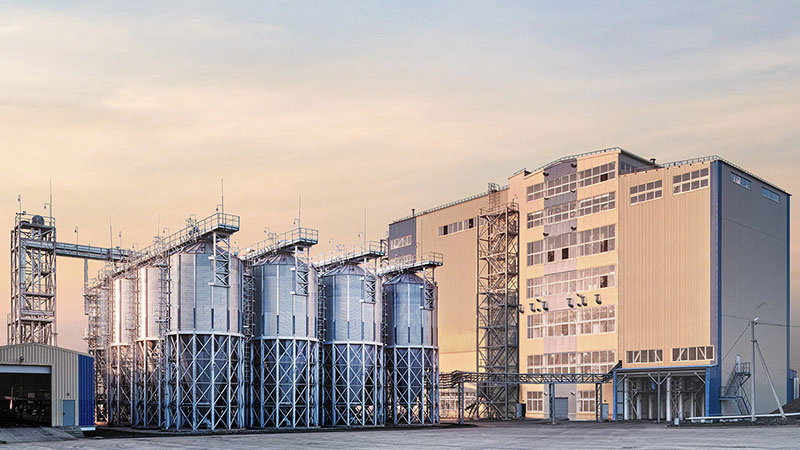
At RICHI, we go beyond project completion. With RICHI Servicee, we’re your dedicated partners in success. Count on us for expert guidance, minimal downtime, and optimized productivity. Choose RICHI for unmatched service and support.
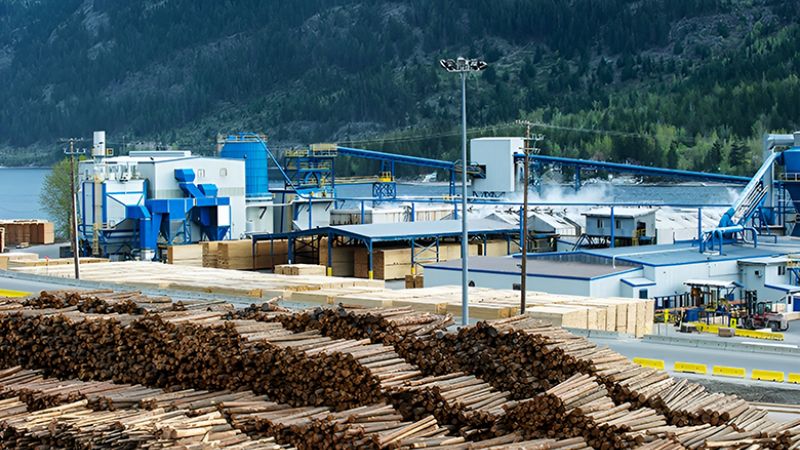
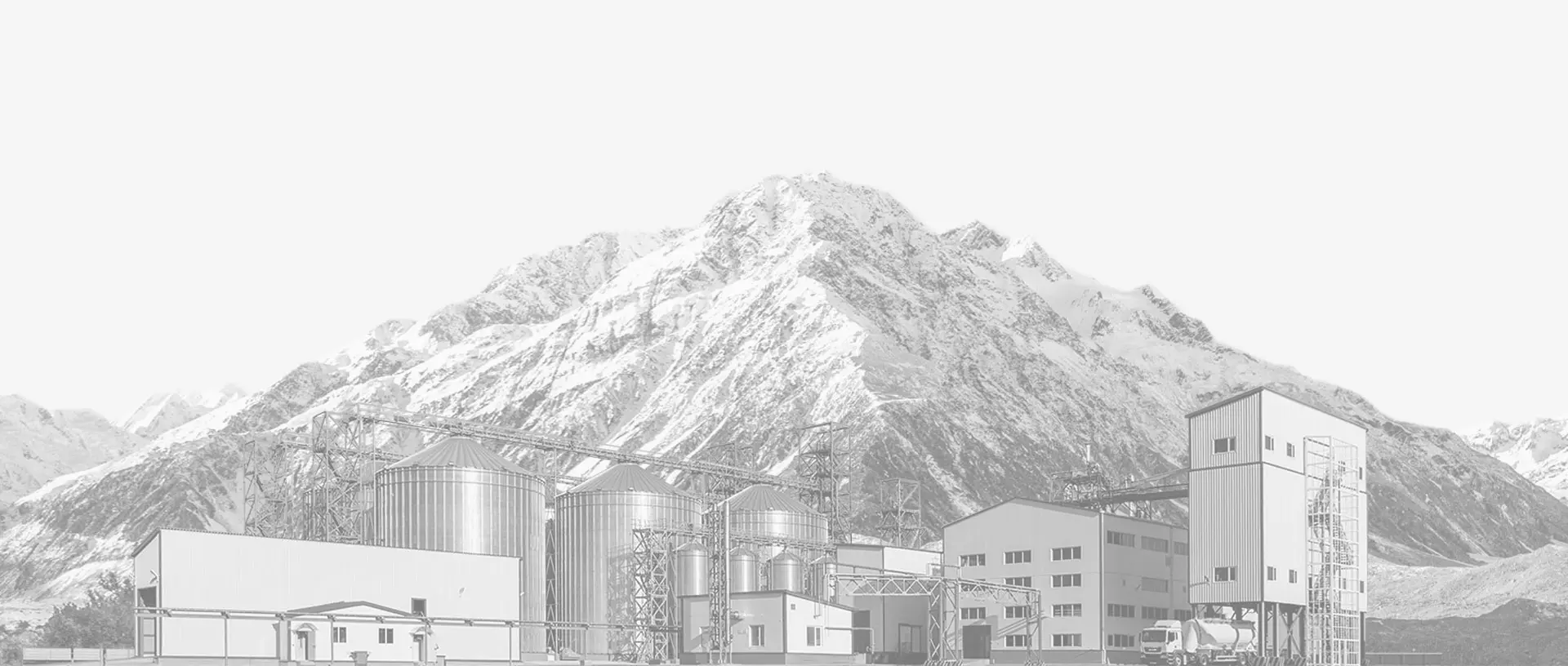

Meet global product demands and quality standards with industry-leading pellet plant design, engineering, equipment, and construction services for pellet processors.
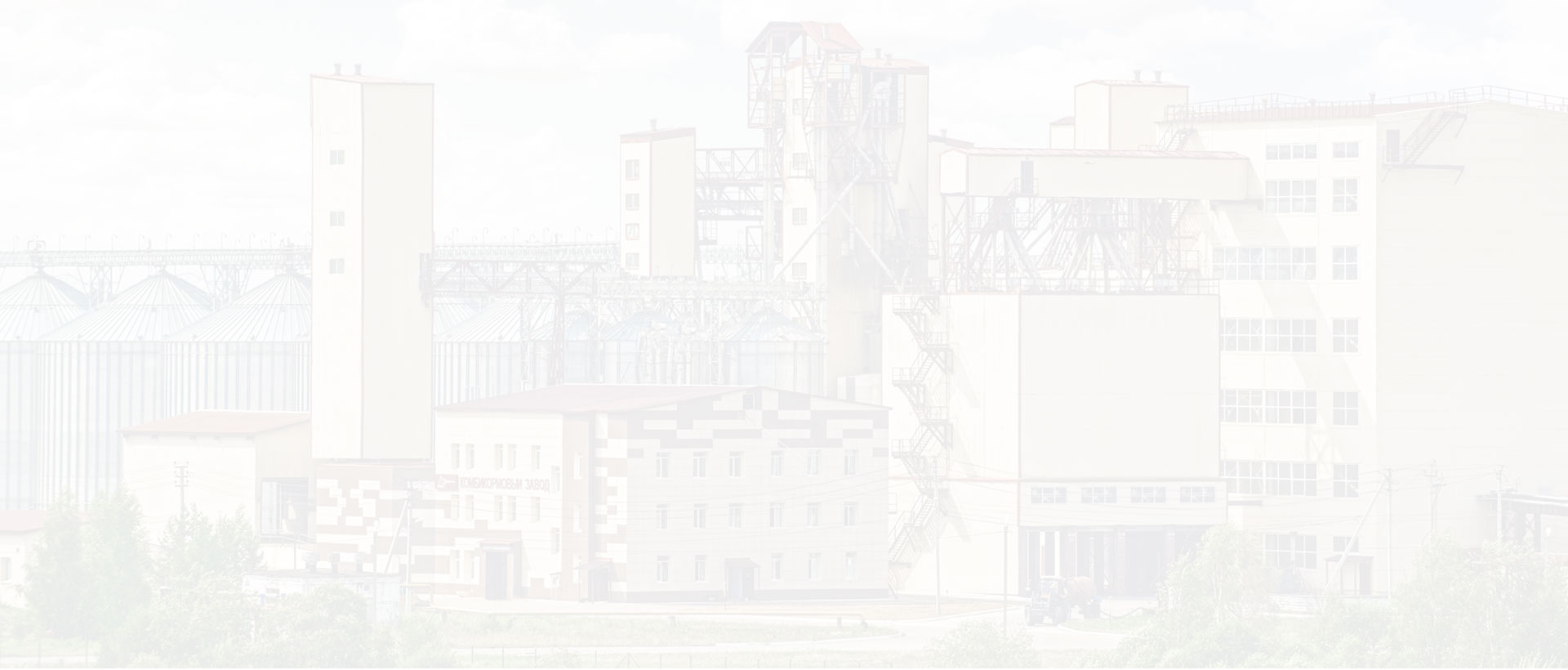
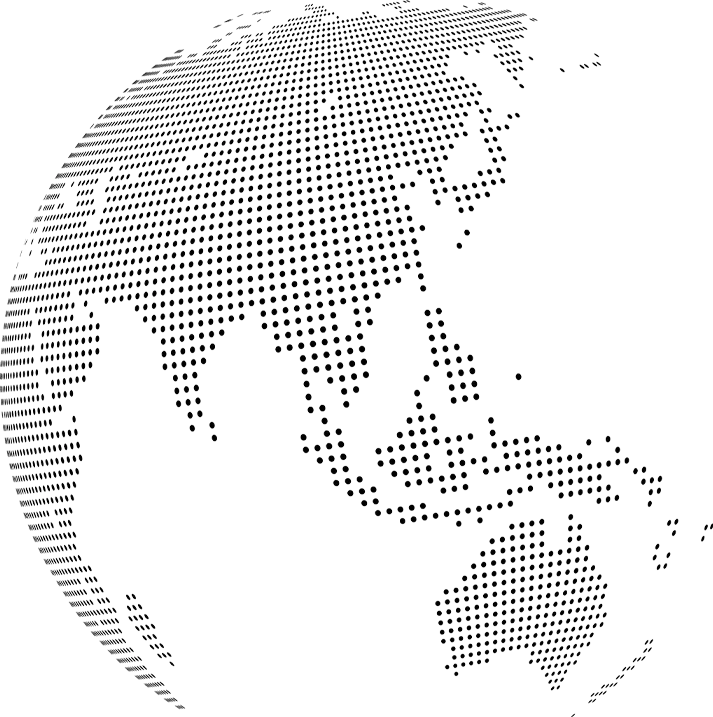
Your Partner Beyond Project Completion
2000+ cases
RICHI is the leading designer, manufacturer and builder of pellet plants in the world, completing over 2000 projects in 140 countries across 6 continents.
Read More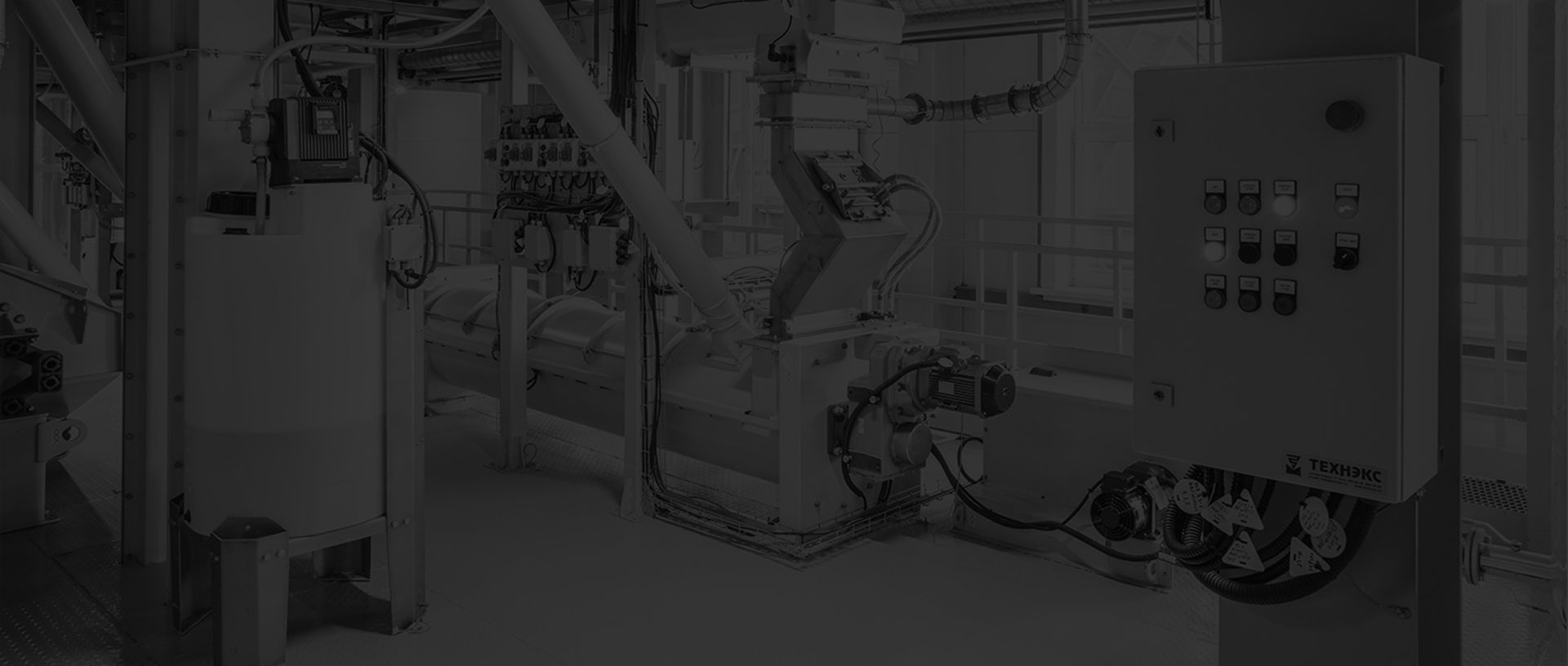
Increase plant productivity, profitability, and safety by integrating high quality equipment into your pellet production line. Over the years, RICHI has become China's top pellet equipment manufacturer. At the same time, RICHI has established valuable partnerships with the world's leading component and raw material manufacturers to bring you the best there is in technology, automation, and efficiency in pelleting plant machinery.
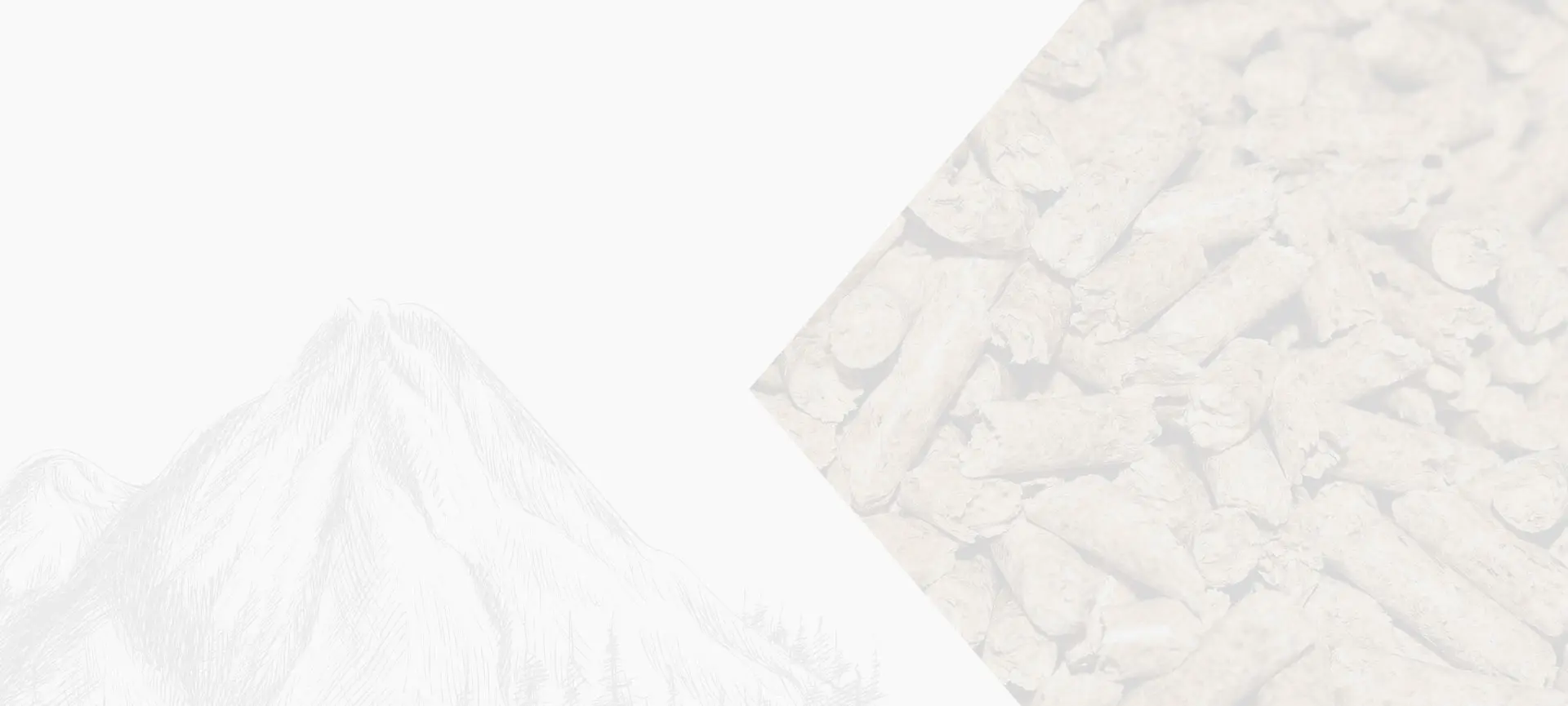
For nearly 30 years, RICHI has been providing best-in-class pellet plant equipment and services to clients across a variety of industries, sizes, and needs. We pride ourselves on the knowledge and skill that each team member possesses – from our technical sales team to our process design engineers. You can count on RICHI Machinery to take your operation to the next level of innovation, quality, and success.
Need help with your pellet manufacturing plant project? Contact us today.
ANIMAL FEED
BIOMASS
WOOD
ORGANIC FERTILIZER
AQUA FEED
CAT LITTER
MUNICIPAL WASTE RECYCLING
SPECIAL PELLET PRODUCTION
RICHI Machinery continues to deliver world class pellet mill equipment, pellet plant engineering and project solutions that add value to our customers in the animal feed, wood waste, agriculture waste, organic fertilizer, cat litter and special pellet products industries. Throughout the years, we RICHI Machinery have built strong brand, becoming industry-leading pellet machine manufacturer. We value integrity, promise quality, and prioritize your success.
Learn MoreWith our expert team, we precisely implement your process engineering requirements in pellet mill and pelletizing plant systems. No matter which industry you’re in – we understand your needs and deliver solutions that meet the highest standards.
At RICHI, quality comes first. Our pellet making machine and related pellet line equipment undergo rigorous quality controls to ensure they meet the highest standards. Rely on products that are durable, safe, and efficient.
With decades of experience in pellet machine and pellet production line production, we have earned a reputation as a trusted partner in various industries. Our expertise allows us to cover a wide range of applications.
Not only do we offer premium pelleting equipment, but we are also experts at designing, building, installing, and maintaining facilities from the ground up. Our expertise is within pellt plant process design, discovering the most efficient, productive, and profitable way to handle your materials in an end-to-end cycle.

Keeping in touch with us is an effective way to solve all your problems. If you have any needs or questions, please leave your contact information, then RICHI technical consultants will send design, quotation, videos to your mailbox. You can also contact us directly via WhatsApp: +86 13838389622
Copyright©2015-2024 by HENAN RICHI MACHINERY CO., LTD. All rights reserved.